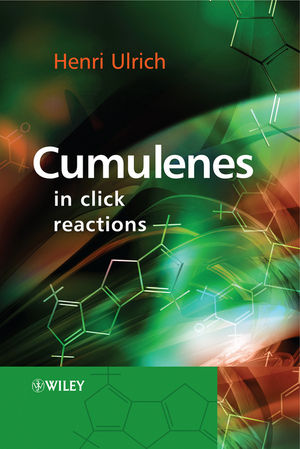Cumulenes in Click ReactionsISBN: 978-0-470-77932-3
Hardcover
568 pages
December 2009
 |
||||||
Connect with Wiley Publicity
Wiley is pleased to announce the publication of the first ever book on the chemistry of cumulenes. Cumulenes in Click Reactions expands the scope of the hot topic: click chemistry.
Cumulenes are organic molecules with two or more cumulative (consecutive) double bonds. Their reactions often proceed at room temperature, with or without a catalyst, and are stereospecific, giving the reaction products in high yields - these are all characteristic features of click reactions. Click reactions are a current hot topic in organic synthesis.
Written by a well-known authority in the field, Henri Ulrich, Cumulenes in Click Reactions presents a comprehensive list of cumulene systems and their reactions, with an emphasis on their "click-like" nature. The chapters are structured according to the number of carbon atoms in the system.
Cumulenes in Click Reactions will be an invaluable resource for researchers and advanced students in industry and academia working in the fields of synthetic organic, inorganic and bioorganic chemistry.
Contents
Introduction
One-Carbon Cumulenes: sulfines, sulfenes, thiocarbonyl S-imides, thiocarbonyl S-sulfides, and 1-aza-2-azoniaallene salts.
Two-Carbon Cumulenes: carbon oxides, carbon sulfides, carbon nitrides (isocyanates, isothiocyanates, and carbodiimides), phosphaallenes, and diarsaallenes.
1,2-Dicarbon Cumulenes: ketenes, thioketenes, ketenimines, 1-silaallenes, 1-phosphaallenes, and other metal allenes.
1,3-Dicarbon Cumulenes: thiocarbonyl S-ylides, 2-azaallenium salts, 1-oxa-3-azoniabutatriene salts, 1-thia-3-azoniabutatriene salts, and phosphorous ylides.
1,2,3-Tricarbon Cumulenes: allenes, butatrienes, higher cumulenes and heterobutatrienes.
Noncarbon Cumulenes: azides, triazaallenium salts, sulfur oxides, sulfur nitrides, N-sulfinylamines, sulfurdiimides, and dithionitronium cation.



